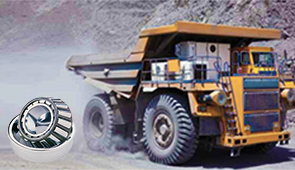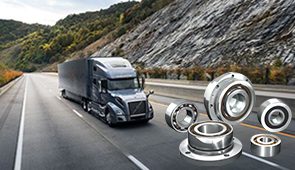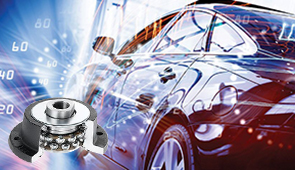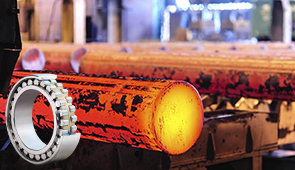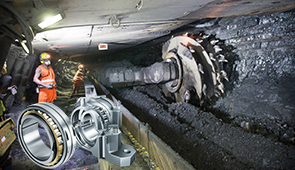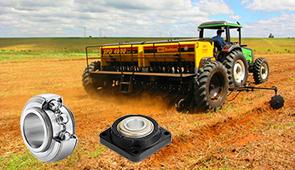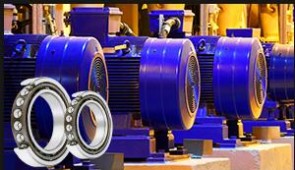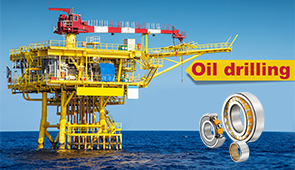Cylindrical Roller Bearing: The Essential Guide to Rolling Bearings
Cylindrical roller bearings are a critical component in numerous industrial applications, renowned for their ability to manage heavy radial loads and operate in high-speed environments. Their unique design and precision engineering make them a preferred choice in industries ranging from automotive manufacturing to power generation. But what exactly sets cylindrical roller bearings apart from other rolling bearings? This comprehensive guide will break down their structure, functionality, and advantages, while also exploring key considerations for selection and maintenance. Whether you’re an engineer, a maintenance professional, or someone seeking a deeper understanding of machinery components, this article will provide the technical insights you need to maximize the performance and longevity of cylindrical roller bearings.
What is a Roller Bearing and How Does it Work?
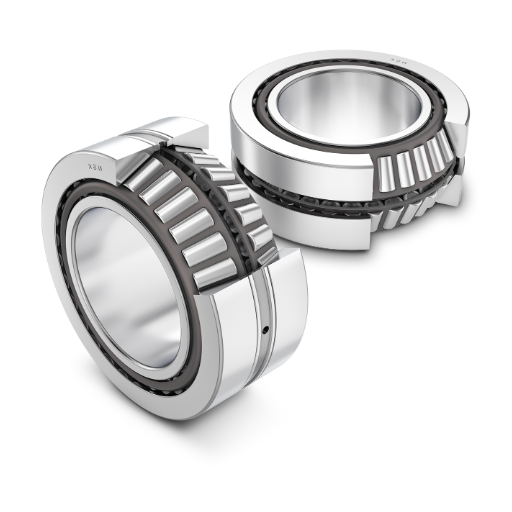
Understanding the Basics of Roller Bearings
Roller bearings are a type of mechanical component that assists in the reduction of friction between surfaces to allow for the smooth rotation of various parts. These mechanical components use rolling elements such as cylinders, spheres, or tapered components with the two rings that are commonly known as the inner and outer raceways. These rolling elements support loads and keep the raceways apart in such a way as to less contact and friction. Because of this, no rolling bearing will ever make contact with either the inner race or the outer race; thus, the term rolling bearing.
In mechanical engineering, roller bearings are primarily used in supporting both radial and axial loads in a rotating system. Radial loads are the ones that act on the shaft perpendicularly, while axial loads act parallel to the shaft. Depending on their construction, roller bearings are capable of handling one or sometimes both types of loads. A good example is that of cylindrical roller bearings, which have axial load but high radial load capacity, while the opposite is true for tapered roller bearings, which can accept radial and axial loads at the same time, thus applicable for tough operations.
For optimal performance, roller bearings need to work in conjunction with industrial systems such as automotive machinery and aerospace tools. These types of industries require specific attention to their sectors to maximize the overall bearing outputs and quote the jostling forces from energy consumption. Although these types of bearings are self-sufficient tools, they require a certain amount of power for operation. The primary purpose of these dynamic instruments is to overcome the risks of energy loss due to friction and increase the lifespan of the machinery used. In addition, motor rotation speed, altitude, temperature, and load bearing capacities all contribute to the operating conditions that alter the machinery and bearings’ function. A thorough understanding of these components helps to maximize their receiver system’s efficiency.
The Function of Rolling Elements in Bearings
Balancing friction among the component parts of a bearing assembly is one of the major roles which rolling elements perform. They are also called spheres (balls) or cylinders (rollers). They are meant to carry combined, axial or radial loads while rotating with no or minimum opposition to motion.
For example, ball bearings are the most suitable ones for applications with rotational speed and low friction characteristics, while cylindrical roller bearings have larger contact areas and are thus more advantageous for heavier radial loads. Tapered rollers also double as axial force bearing rolls in addition to radial force, increasing their utility for heavy-duty applications like automotive and industrial transmissions. Even the most basic elements of a bearing, like rollers, will be subjected to friction and even wear if we don’t ensure a balanced load on all the rollers. This will help increase the life of the bearing and help achieve its optimum efficiency.
The working surfaces of the rolling components are further enhanced with advanced materials such as ceramics or coated steels. These innovations aid in resisting corrosion, high temperatures, and fatigue failure, thereby improving the reliability of bearing performance under extreme conditions. Considering the application-specific factors like speed, load, lubrication, environment, and exposure, the most effective combination for rolling elements can be selected and configured according to the given design and efficiency requirements.
Applications and Benefits in Industrial Settings
Rolling element bearings are of certain importance in many fields because they facilitate the smooth functioning of machines with high loads and low friction. These components are standard in such high-performance equipment in the manufacturing, aerospace, automotive, and energy industries. For example, in manufacturing systems, CNC machines have precision bearings, which make productivity higher and downtime lower as more precise tolerances can be achieved. In aerospace applications, advanced material coatings improve thermal resistance so the vehicle can perform under extremely low temperatures and high atmospheric air pressures.
Modern bearing systems have integrated condition monitoring with predictive maintenance technologies, significantly boosting bearing reliability. Industrial operators can now use sensors and real-time data analytics to detect wear patterns, irregular vibrations, or lubrication deficiency before a failure, helping lower maintenance costs while avoiding unanticipated equipment breakdowns. Moreover, the creation of hybrid bearings composed of steel and ceramic materials has enhanced operational lifespan by withstanding high rotational speeds in harsh environments, like wind turbines and high-speed rail systems.
The overall advancements in bearing technologies help optimize machine functionality while lower energy use and material waste. With these innovations in bearing technology, industries can improve their productivity benchmarks while ensuring operational safety.
How to Choose the Right Cylindrical Roller Bearing for Your Needs
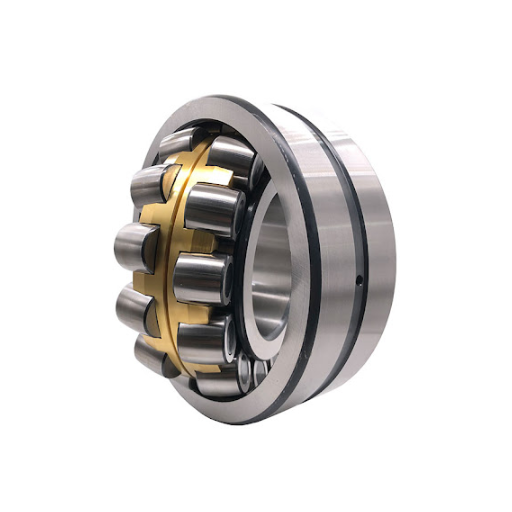
Key Considerations: Load, Speed, and Friction
Before diving into the details on the roller bearing specifics, I would like to say that knowing the function conditions in advance is critical when choosing a cylindrical roller bearing.
- Load Capacity: When dealing with heavy duty applications, cylindrical roller bearings stand out as they effectively manage intense radial loads. Static or dynamic, the load’s magnitude and type must be calculated accurately. These values denote the amount of force a given bearing can withstand to sustain without deformation or failure over time.
- Speed Limits: The sustaining speed of a bearing is dependent on its design, as well as lubrication, and the operating environment. Bearings used in high-speed applications, like turbines or precision machinery, are equipped with highly modified cage designs that counteract heat development as well as centrifugal forces, averting damage to the bearing. Checking the speed (dN value) against operational requirements will help you understand whether the specifications set are met.
- Friction and Efficiency: To ensure better functioning of a system, reducing friction is a requirement alongside bearing lifespan. Disregarding the fact that surface finishing and low friction coating can significantly lower energy loss, the use of better lubricants also helps. For systems where maximum stringency is a requirement, the best the market can offer are bearings with an inner race of lower rolling resistance, able to withstand tight tolerances.
Considering the load, speed, and friction factors in detail enables the engineers to guarantee discerning compatibility together with outstanding durability and efficiency in their machines.
Understanding Diameter and Width Specifications
Bearing diameter and width are often regarded as critical because they measurably impact a bearing’s operational effectiveness, load capacity, and compatibility within a mechanical system. The outer diameter pertains to the greatest measurement of a bearing’s external surface. Bores, or internal holes, interface with shafts, and the bore diameter denotes these holes paired with shafts. Width corresponds to the axial space occupied by the bearing, which determines the bearing’s capacity in managing thrust loads, fitting constraints in the assembly, and its other positional constraints.
Tighter alignment, greater load capacity, and improved efficiency are results of wider and greater diameters, but these attributes create challenges in achieving ideal alignment. Bearings designed for high-speed applications typically require tighter dimensional tolerances to reduce imbalance and curb energy dissipation due to frictional changes. Applying precision-machined materials and manufacturing techniques to ensure compliance with international standards like ISO 15 or ABMA guarantees the precision of bearing dimensions, particularly their outer one, and further enhances their lifespan and dependability.
Engineering software, as well as standardized tabela charts, provide bearing diameter, width, and application particulars that make the task of locating bearings simpler.
The Role of Cage Design in Performance
Like the separator or retainer, the cage bears great importance in bearing construction because it affects the working speed, lifetime, and thermal performance of the bearing. Cages are used in the bearing to preserve the proper distance among the rotating elements, which enables smooth rotation with minimum friction and wear. Cages, depending on the application requirements such as the operating speed, load, and temperature, are made of steel, brass, polyamide, or phenolic materials.
High-speed or high-temperature applications demand increased lubrication and fuel flow as well as improved heat removal, which has led to the development of new optimized geometry cage designs. Polyamide cages are reinforced due to their low weight and superior thermal properties, which makes them perfect for low-inertia systems that generate less heat. Alternatively, machined brass or steel cages are used in harsh conditions such as heavy machinery or aerospace systems, which involve high loads and stress.
Recent research shows that inadequate bearing cage design may greatly impact premature bearing failure, as non-optimized design or alignment can worsen several processes like wear and distortion under load. To mitigate risks, engineers use finite element analysis (FEA) and computational fluid dynamics (CFD) simulations to test cage designs performed during simulated operating conditions. Such approaches guarantee the bearing’s reliability and its structural integrity throughout prolonged use. Coupled with modern advances in materials science, these precision-engineered solutions put into bearing cages are critical in increasing bearing lifespan and performance in many industries.
What are the Differences Between Tapered Roller Bearings and Cylindrical Roller Bearings?
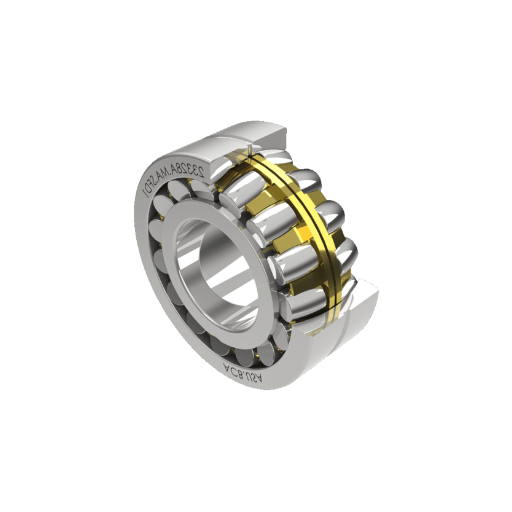
Comparing Load Carrying Capacity and Stiffness
Based on their load-handling capabilities and the structural design, both tapered roller bearings and cylindrical roller bearings have diagnostic applications. Due to their conical shape, tapered roller bearings are best at managing combinations of axial and radial loads. This makes them very useful in situations where there is a major problem associated with bearing axial loads, like in the case of automotive wheel hubs that experience major radial and thrust forces. Their geometry is also capable of permitting changes to be made to the axial load bearing capacity by changing the contact angle. This greatly improves the functionality of tapered roller bearings for differing operational needs.
Cylindrical roller bearings are best known for their ability to withstand high radial loads. They can bear bending loads with astonishing stiffness because of the uniform contact made with cylindrical rollers around the raceway surface. Most bearings without the ability to handle any significant amount of axial load are said to be ‘economical.’ This makes them best suitable for use in electric motors, pumps, and other radially dominated machinery. For applications that do not require friction but instead need high speeds, ruggedness, and the ability to bear heavy radial loads, cylindrical roller designs are used.
As stiffness is important in other forms of system dynamics, it also plays a role in more precise states, as in machine tool spindles or aerospace systems. The geometry and material properties of the rollers are of great importance to the deflection characteristics of each bearing type. For other mechanical systems, engineers need to pay extra attention to selecting the proper bearings, which would enhance the optimization features of the system regarding performance, durability, and reliability.
Evaluating Axial and Radial Load Capabilities
Like other engineering components, the capability of bearings to sustain axial and radial loads is fundamental to evaluating them in terms of particular use cases and applications. An axial load or a thrust load is a force acting parallel to the shaft’s axis of rotation, whereas a radial load is perpendicular to the shaft’s axis of rotation. The given load capacity in each direction varies with design, materials, and even the lubrication in use. For instance, ball bearings endure moderate axial and radial loads, and are best applied in low to moderately force environments—but tapered roller bearings are better suited for handling high combined loads due to their conical shape.
Advanced materials coming from breakthroughs in manufacturing technologies have only improved these characteristics. The development of thermal-resistant alloys and even composites makes bearings withstand extreme loads, increased rotational speeds, and harsher torrents of environments. Add in precise simulation and testing procedures, and performance predictability becomes greatly enhanced, making selection across a wide spectrum of use cases, be it industrial machinery or high-performance aerospace systems, easier.
Let’s take, for example, the high-speed spindles of CNC machines where the bearing’s dynamic capacity has to deal with cutting forces alongside any axial pressure that can occur when the tool is engaged. On the other hand, consider the case of aerospace turbine engines where the thrust forces dominate. These kinds of bearings must be able to sustain significant axial loads while still being able to endure many cycles without failure. A good comprehension of axial and radial load capabilities guarantees an efficient system, increases lifespan, and diminishes the chances of system components failing due to excessive external forces.
Applications in Automotive and Industrial Sectors
Bearings are important components within a vehicle that determine its efficiency during movement and operation, particularly in the automotive and industrial sectors. Within the automotive sector, bearings are incorporated within systems like transmissions, axles, and wheels. Tapered roller bearings, for instance, are commonly utilized in automobile hubs owing to their capability of handling radial and axial loads, thereby allowing effortless wheel mobility throughout different driving conditions. Furthermore, propulsion by contemporary ceramics and hybrid materials is being incorporated to further enhance performance by minimizing friction and wear, even in scenarios of high-speed or high-temperature conditions.
The industrial sector similarly employs self-aligning ball bearings specially designed to withstand hefty rotational forces like those applied during the motion of conveyor belts. These, together with electric motors and turbines, require a wider set of durable bearings. Self-aligning ball bearings, for example, are specifically engineered to counteract shaft misalignments, a common occurrence in industrial machinery, thus sustaining low vibration while extending equipment longevity. Moreover, the invention of condition-monitoring technologies, including vibration analysis and thermal imaging, has enabled preemptive uncritical bearing wear strategies as well as bearing degradation mitigation accompanied by predictive maintenance bearing monitoring for active industrial use.
Bearing design and optimization are being transformed by the adoption of advanced computational techniques like finite element analysis (FEA). Simulations like these enable the accurate analysis of stress distribution, providing insights that improvethe condition and fatigue life of the structure or system. Therefore, the marriage of science and technology with advanced materials and real-time monitoring reinforces the critical importance of bearings in automotive and industrial machinery for achieving high operational efficiency and reliability.
How to Maintain and Extend the Life of Your Rolling Bearings
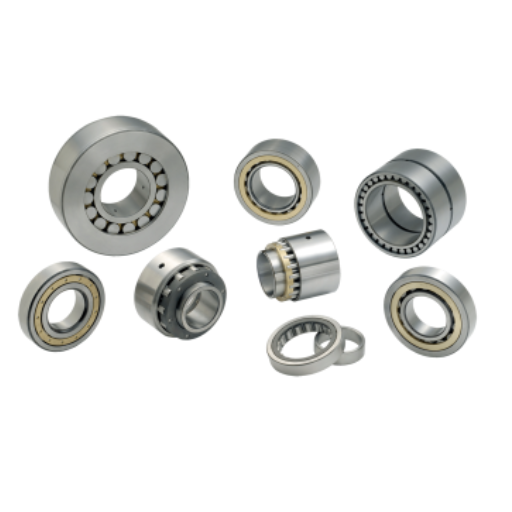
Proper Lubricant Selection and Application
Selecting the correct lubricant is one of the most essential tasks when analyzing the performance of a rolling bearing and its effectiveness, life span, and overall efficiency, as it directly impacts these factors. Bearing lubricants must accomplish the following: minimize the friction and wear of moving parts, avoid deterioration, and cool down the bearing assembly. Selecting a lubricant, one must keep in mind the operating temperatures, bearing speeds, load conditions, and outside contaminated factors. For example, bearings that have to withstand large temperatures and heavy loads will require specialty synthetic lubricants designed with high thermal stability and load-bearing capabilities.
The application method, however, is no less important. These include filling grease, oil misting, and circulating oil systems. Research demonstrates that underlubrication contributes to increasing surface wear, which leads to wear and failure; however over overlubrication causes unnecessary heat and energy wastage. So, the optimal strategy would be to automate the monitoring process using automatic lubricators or condition monitoring devices to reduce these pre-determined lubricant limits.
Recent developments in technology have led to the creation of nanotechnology-enhanced lubricants, which have a longer shelf life and are more favorable to the environment. These lactated lubricants also show great promise in preventing oxidation, improving film strength, and enhancing the longevity of rolling bearings. Operators who use critical modern lubrication techniques alongside real-time monitoring will drastically cut down on equipment downtime, operating costs, as well as ensure dependable performance and reliability of their systems.
Identifying and Preventing Common Seal Issues
In an industrial setting, a seal failure can create unwanted operational inefficiencies and equipment damage, which may result in unexpected downtimes. You should know the common causes of fitting issues to help you mitigate your seal problems. Material wear, installation mistakes, excessive stress, fluctuating heat, and thermal change are some of the most recurrent fitting problems.
Some of the materials that undergo fitting issues include incompatible chemicals that may lead to cracking, shrinking, or hardening of materials. To improve resistance to incompatible chemicals, it is best to use fluorocarbon or perfluoroelastomer. Not employing the right installation technique can cause a lot of stress on seals, leading to premature cracking or failure. Fitting seals require professional alignment as well as adherence to specifications to guarantee the reduction of issues.
Another problem that comes with materials is a lack of use of appropriate pressure regulators which can lead to a drop in form or excessive deformation under extreme operating conditions. Employing PTFE or metal spring energised seals which are able to withstand high pressures enables you to ease these issues. Furthermore, thermal change silicone or Viton can further reduce seal performance.
Some strategies aim to prevent seal problems, which also require proactive maintenance methods. Non-intrusive testing methods like ultrasonic testing and thermographic analysis identify early signs of deterioration along with regular inspections. Adequate seal system reliability and performance can be achieved with stringent maintenance practices, proper choice of operating conditions and materials, and use of advanced sealing technologies.
Regular Inspection and Maintenance Tips
To extend the life of seals within critical systems, a detailed seal inspection and maintenance program is required. Automatic review pertains to the verification of cracks, wear, tear, and deformations irrespective of seal materials, especially in systems that undergo extreme temperatures, high pressures, or abrasive substances. Other than visual inspections, rotating equipment ought to be equipped with advanced tools such as vibration analysis, capable of identifying anomalies indicative of seal failures during equipment rotation.
During maintenance activities, seal lubrication and the operating environment should be carefully controlled as wrong lubrication is known for excessive seal wear. Furthermore, the adoption of Condition Monitoring System (CMS) gives real time metrics that allow for preemptive decision making hence CMS is a predictive maintenance tool. For instance, temperature spikes from friction, excessive leakage rates, and lubricant depletion beyond acceptable limits should trigger cabin pressure relief valves before total system failure occurs.
Seal failure can be minimized only when replacements are done with seals bearing the intended application seal’s stamp. Specific instructions under installation guidance like torque, alignment, and surface treatment, are all to be followed thoroughly due to their impact on early seal failure.
Why Choose Spherical Roller Bearings for Heavy-Duty Applications?
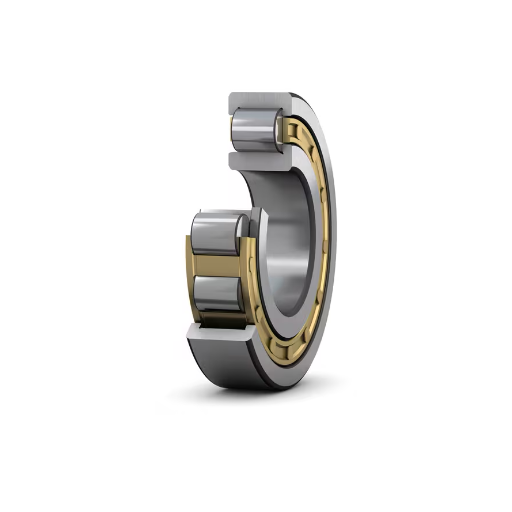
Advantages of Handling Heavy Loads
The ultra-heavy-duty application that demands high axial and radial load makes use of spherical roller bearings, as these are designed specifically for that purpose. Their ability to self-align means they can take care of the misalignment efficiently. This is a very important special feature in equipment that deals with deflection or shaft displacement when there is load stress. These bearings perform magnificently when it comes to distributing the load with the rolling elements, which reduces the localized stress and extends operational longevity.
Furthermore, the durability of spherical roller bearings has advanced greatly due to the breakthroughs in materials and science, and lubrication technology. New designs have included the use of heat-treated steel along with internal geometries that make them incredibly resistant to wear, fatigue, and impact loads. They are widely used in many industries such as mining, construction, and power generation, as equipment is operated under severe conditions.
When used with housings that are precision engineered, spherical roller bearings have been shown to perform reliably without failure in contaminated or high-noise vibrating environments. Enhanced efficiency of the heavy machinery in demanding tasks, improved uptime along with maintenance and costs, not only makes these features enables uninterrupted operation but also provides unquestionable reliability in these conditions.
Design Features that Enhance Reliability and Precision
Modern technological advancements for greater accuracy and reliability have been incorporated in the design of spherical roller bearings. One such consideration is the tolerant misalignment feature, which lessens the wear and destruction as a result of shaft deflection or mounting error wear and failure due to shaft deflection or mounting errors. It is possible thanks to the self-aligning raceways and rollers that allow bearings to work under shifting loads or structural changes.
Moreover, premium materials are used in the production of modern spherical roller bearings, for example, vacuum-degassed steel, which is highly resistant to damage from continuous stressing and increases the lifespan of the equipment. Additional features include optimized internal geometry, like advanced raceway profile design and relief at roller ends, which lowers friction and heat production, hence increasing efficiency in axially and radially loaded systems and reducing energy usage.
Another key feature is strengthened seals, which block dust, moisture, and other contaminants from entering the machinery and are essential for maintenance in harsh operational or polluted environments. Also, many designs these days offer advanced lubrication features like lubrication flow grooves and holes that allow effective coolant and lubricant circulation required to remove thermal energy and guard against frictional surface wear during prolonged operations.
Finally, high-precision machining and associated processes such as surface finishing take care of maintaining accurate values and even distribution of forces geometrically defined as “shapes.” Such attention to detail is what enables spherical roller bearings to achieve high performance and makes them reliable in applications that are demanding and require precision.
Comparisons with Other Rolling Bearings
Spherical roller bearings outperform other types of rolling bearings, like ball or cylindrical roller bearings, in terms of handling heavy loads and misalignment in a given application. In contrast to ball bearings that primarily assist radial loads and have a minimal capacity for axial loads, spherical roller bearings can handle moderate axial loads together with high radial loads simultaneously. The reason for this further is the self-aligning feature, which enables compensation of shaft deflection and misalignment without compromising on functionality.
Spherical roller bearings also have an advantage over dynamic conditions when compared to cylindrical roller bearings. Although they fall short, outperforming in applications with high levels of radial load, cylindrical roller bearings are unable to fit cone shaped misalignment very well. With the aid of their curved raceway profile, spherical roller bearings have enhanced stability and defend against unbalanced torque that leads to premature deterioration.
Using bear-resistant alloys or heat supplied in a contaminated environment makes spherical roller bearings very beneficial for extreme conditions. Their construction enables industries like mining, construction, or marine applications to withstand harsh temperature conditions.
The dimensions and load ratings of spherical roller bearings make them a good option for equipment upgrades. This makes them important parts in large machines that need high reliability and long life. These design elements combine with the technological benefits provided by roller bearings to make them surpass standard rolling bearings in multiple industrial and heavy-duty functions, positioning them as leaders on the durability and precision scale.
Frequently Asked Questions (FAQ)
Q: What is a Cylindrical Roller Bearing?
A: A cylindrical roller bearing is a type of rolling bearing that uses cylindrical rollers to maintain the separation between the bearing races. It is designed to handle high radial loads and is typically used in applications where there is a need for high-speed operation and high radial shock resistance.
Q: How do cylindrical roller bearings compare to needle roller bearings?
A: Cylindrical roller bearings and needle roller bearings both use rollers to reduce friction in the bearing. However, cylindrical roller bearings have larger rollers and can support higher radial loads than needle roller bearings, which have smaller and more elongated rollers.
Q: What are the advantages of using a cylindrical roller bearing?
A: The advantages of using a cylindrical roller bearing include their ability to handle higher radial loads, greater contact area, and improved service life compared to other types of bearings. They are also designed to accommodate angular misalignment and are compatible with various shaft and housing designs.
Q: What is the role of the outer ring in a cylindrical roller bearing?
A: The outer ring in a cylindrical roller bearing acts as a raceway for the rollers. It helps to maintain the separation of the rollers and provides a surface for the rollers to rotate against. The outer ring is crucial for the bearing’s performance and load-carrying capacity.
Q: How does the dynamic load capacity of cylindrical roller bearings affect their performance?
A: The dynamic load capacity of a cylindrical roller bearing determines how much load the bearing can handle during operation. Bearings with higher dynamic load capacities can support heavier loads and have longer service lives, making them suitable for demanding applications.
Q: Are cylindrical roller bearings compatible with high-speed applications?
A: Yes, cylindrical roller bearings are typically designed to be compatible with high-speed applications. Their construction allows them to operate efficiently at high speeds while maintaining stability and reducing friction.
Q: Can cylindrical roller bearings support axial loads?
A: While cylindrical roller bearings are primarily designed to support radial loads, some configurations can support limited axial loads. However, for applications requiring significant axial load support, designs such as tapered roller bearings or roller thrust bearings are more suitable.
Q: What factors affect the selection of roller bearings?
A: The selection of roller bearings is affected by factors such as the type and magnitude of loads (radial or axial), the speed of operation, the desired service life, compatibility with the application, and the specific environmental conditions. It is essential to consider these factors to ensure optimal performance.
Q: How do you properly lubricate cylindrical roller bearings?
A: Proper lubrication of cylindrical roller bearings is crucial for reducing friction and wear. It involves selecting the right lubricant based on the operating conditions, applying the correct amount, and ensuring regular maintenance. Adequate lubrication helps extend the bearing’s service life and maintain its performance.
Q: What is the significance of the outer diameter (OD) in cylindrical roller bearings?
A: The outer diameter (OD) of a cylindrical roller bearing is significant because it determines the bearing’s fit within a housing or casing. The OD, along with other dimensions like the inner diameter and width, helps ensure that the bearing is compatible with the application and can handle the required loads.
UCTH213-40J-300 with Setscrew(inch)
CNSORDERNO: Normal-duty(2)
TOGN: UCTH213-40J-300
SDI: B-R1/8
SD: 2 1/2
UCTH212-39J-300 with Setscrew(inch)
CNSORDERNO: Normal-duty(2)
TOGN: UCTH212-39J-300
SDI: B-R1/8
SD: 2 7/16
UCTH212-38J-300 with Setscrew(inch)
CNSORDERNO: Normal-duty(2)
TOGN: UCTH212-38J-300
SDI: B-R1/8
SD: 2 3/8
UCTH212-36J-300 with Setscrew(inch)
CNSORDERNO: Normal-duty(2)
TOGN: UCTH212-36J-300
SDI: B-R1/8
SD: 2 1/4
UCTH211-35J-300 with Setscrew(inch)
CNSORDERNO: Normal-duty(2)
TOGN: UCTH211-35J-300
SDI: B-R1/8
SD: 2 3/16
UCTH211-34J-300 with Setscrew(inch)
CNSORDERNO: Normal-duty(2)
TOGN: UCTH211-34J-300
SDI: B-R1/8
SD: 2 1/8









